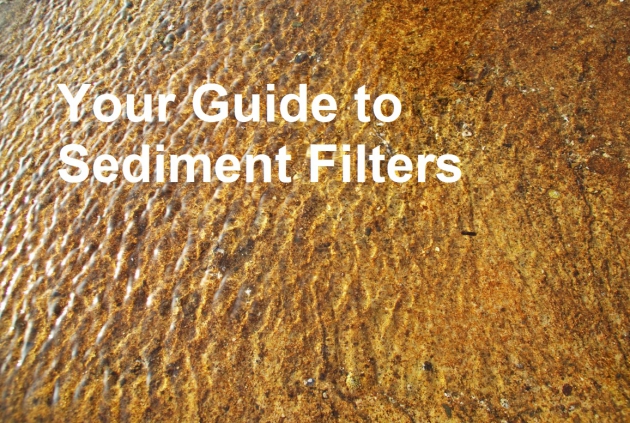If you’re considering water treatment options, you may have looked at sediment filters. Sediment filters are designed to trap and remove solids suspended in water supplies. This can be debris from runoff or flecks from aging pipes that could leave your water looking discolored and unappealing. Unfortunately, sediment is not just an aesthetic problem, as it can accumulate inside your pipes and appliances, and prevent filtration systems such as ultraviolet or reverse osmosis from efficiently operating. Since sediment filters are so vital, we’ll shine a spotlight on these important components here.
The Sediment Filter Basics:
Sediment filters capture and remove particulates such as debris or dirt from water passing through them. Sediment is a catch-all term for any particles in your water that are not liquid. This can be flakes of rust from corroded pipes, silt or soil carried in rainwater or other contaminants. Flow changes within the water main can transport sediment into your home pipes. A sediment filter provides a first line of defense against any of this debris or dirt. It prevents solid matter from entering the water supply and impeding your water filtration system performance.
Sediment filters operate through mechanical filtration, which means it physically blocks the unwanted particles from entering the water supply. Imagine how your screen door blocks leaves and bugs from blowing into your house, while you enjoy a refreshing breeze.
Sediment filters have sufficient porosity to allow the water to flow through, but it can capture any sand, dirt or debris the water is carrying.
The Types of Sediment Filter:
Sediment filters can be incorporated into RO, ultraviolet and other filtration systems to enhance the efficiency and protect the more delicate system components. For example, the membrane in RO systems can remove up to 99% of water contaminants, but grit, sand and other suspended particles can damage the surface. By installing a sediment filter as a pre filter in the system, the membrane is protected and the system performance is enhanced.
All sediment filters perform the same job, collecting solid particulates, but there are several types of filters. These include:
- Pleated: Pleated filters are accordion shaped with thin sheets of filter media combined into folds. The volume of folds provides considerably more surface area compared to many other types of sediment filter. Pleated filters use this extensive surface area to trap particulates and as the pleats accumulate dirt, it forms a layer on the filter, which becomes another part of the filtration process. Many pleated filters are also washable, so they can be reused.
- Melt Blown: These types of filter have depth gradients that are created when high velocity gas is blown through molten polymer. This creates intricately layered fibers with a denser inner core and a less dense outer core, which is able to clarify increasingly finer particles.
- String Wound: This type of filter is a variant of melt blown filters, as they are made with tightly wound string of cotton, polypropylene or polyester. The string is firmly wrapped around a core to create graded density. Unfortunately, as the filters become clogged with sediment, the strings can shift and loosen, which can allow particles to re-enter the water.
If you’re considering a water treatment options, contact your local water treatment specialist.

